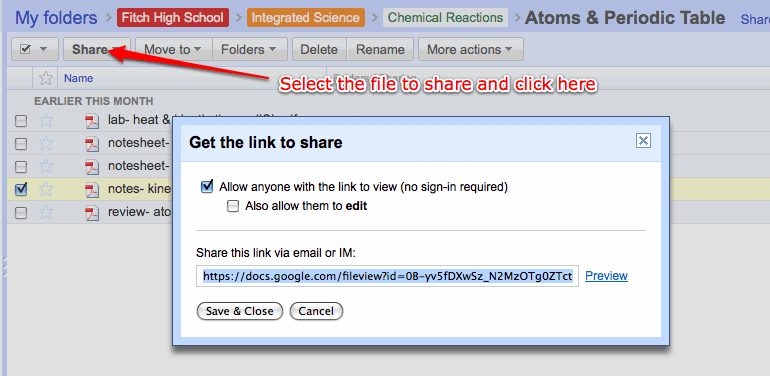The first year I taught about planets was 2006. As luck would have it, the International Astronomical Union (IAU) did me a big favor in August of that year. On August 24, 2006, the IAU clarified the definition of a planet, and thus changed the status of Pluto from "planet" to "dwarf planet." There was suddenly an popular pro-Pluto uprising.
Personally, I agree with the IAU's decision. With the discovery of several objects orbiting the Sun beyond Pluto's orbit that are similar in size and composition to Pluto (Eris, Haumea, Makemake, etc.), it seems to make sense that Pluto fits better into a category that includes these objects instead of being lumped with the classical planets. However, the general public- including the general student population- vehemently disagreed. Perhaps it's because we've always known Pluto as a planet, or because the media mainly reported it as a "demotion" of Pluto instead of an updated classification, or because Pluto's always been the lovable loser of the Solar System, or perhaps because there's a cartoon dog named Pluto. For whatever reason, Pluto suddenly became a topic of discussion all over the planet Earth.
When teaching the topic of dwarf planets, I wanted students to understand that it wasn't just a random decision, but simply a reclassification because new information was discovered. If they disagreed with the IAU's decision, I wanted it not to be because (as one student noted), "the other planets are just being bullies." I had them read articles. I went over the reasons for the re-classification. Unfortunately, though the students knew the new guidelines for planets and dwarf planets by the end, they still wanted Pluto to be a planet for purely emotional reasons. I made minor adjustments from 2006 - 2008, but always with the same result.
In 2009 I decided to try something new. I invented a new planetary system orbiting the Sun-like star Tau Ceti. I made a card for each object in the Tau Ceti system and in pairs, I had students categorize the objects into a few groups. The tricky part with this was that students wanted to just group them only based upon their size, temperature, or distance from the star. It required me constantly going from group to group and asking them to tell me why 2000 km makes sense to be the upper limit for a group of planets. Why not 2500km? Does it make a difference?
I had to continually push back on the students' categorizations. "Why is that object in that group? It orbits another object, not Tau Ceti. Is it really similar to the others?" "Those objects aren't round and are really small. Does it make sense that they're in with some really big objects?" It takes some work to avoid causing frustrations. Like all students, they want to just throw together a couple categories, call it good, and pick up their 10 points. I've also had to work hard to make sure I ask tough questions of students who've done an admirable job of categorizing like objects (Me: "Why are those two in the same group? One is really close to Tau Ceti while the other is way far away"; Student: "They're both moons! They go together!").
Once the students got their categories of planets down, I revealed to the students that though the planetary system they were categorizing is fictitious, I based it pretty much right off of our own Solar System. Then I went through and had them write the name of the object in our Solar System on the analogous card for each object in the made-up Tau Ceti System. I then asked students to look at their categories to see if they still seemed to make sense now that they could compare them to known objects in our Solar System. Most found their categories still made sense.
Then, I asked them to find the object that was analogous to Pluto and look at what other objects were in that category. Students were shocked. All had put it in with either dwarf planets or asteroids (depending on the rules for their categories). Not one group had it lumped in a category with the other eight planets (though most groups did have categories that fit almost perfectly with the gas giant & terrestrial planet classifications). Not. One. Group.
Since this activity I haven't heard any protests to Pluto not being considered a "full" planet. The closest I heard was, "I'd really like Pluto to be a planet, but I know it doesn't really belong there."
Image source: Wikimedia Commons- Pluto Protest & Counter Protest
_________
Files:
- PDF file of objects in the Tau Ceti system
- When I printed, I put four pages on each sheet of paper, thus saving some paper & making the objects easier to handle. The pictures of the objects are all to scale- except Tau Ceti, which is about 10,000 pixels in diameter due to difficulties in making and manipulating the object in Keynote or PowerPoint (it should be nearly 20,000 pixels in diameter).
- PowerPoint and Keynote file of objects in the Tau Ceti system
- For your editing pleasure. Sometimes the huge circle representing Tau Ceti doesn't show up when you open these files. I can only assume it's because the object it too big to save properly.
 Our district has been throwing around the term "21st century skills" an awful lot lately. What's more distressing is no one really is making any attempt to identify what that means (if anything at all). My vice-principal sent out an email saying he was planning a one hour professional development session to go over what that means. I mentioned in passing that's an area of particular interest for me1. So, now I'm co-presenting.
Our district has been throwing around the term "21st century skills" an awful lot lately. What's more distressing is no one really is making any attempt to identify what that means (if anything at all). My vice-principal sent out an email saying he was planning a one hour professional development session to go over what that means. I mentioned in passing that's an area of particular interest for me1. So, now I'm co-presenting.


 "We can use Wikipedia? Our [insert subject here] teacher told us Wikipedia isn't accurate, so we couldn't use it."
"We can use Wikipedia? Our [insert subject here] teacher told us Wikipedia isn't accurate, so we couldn't use it."
